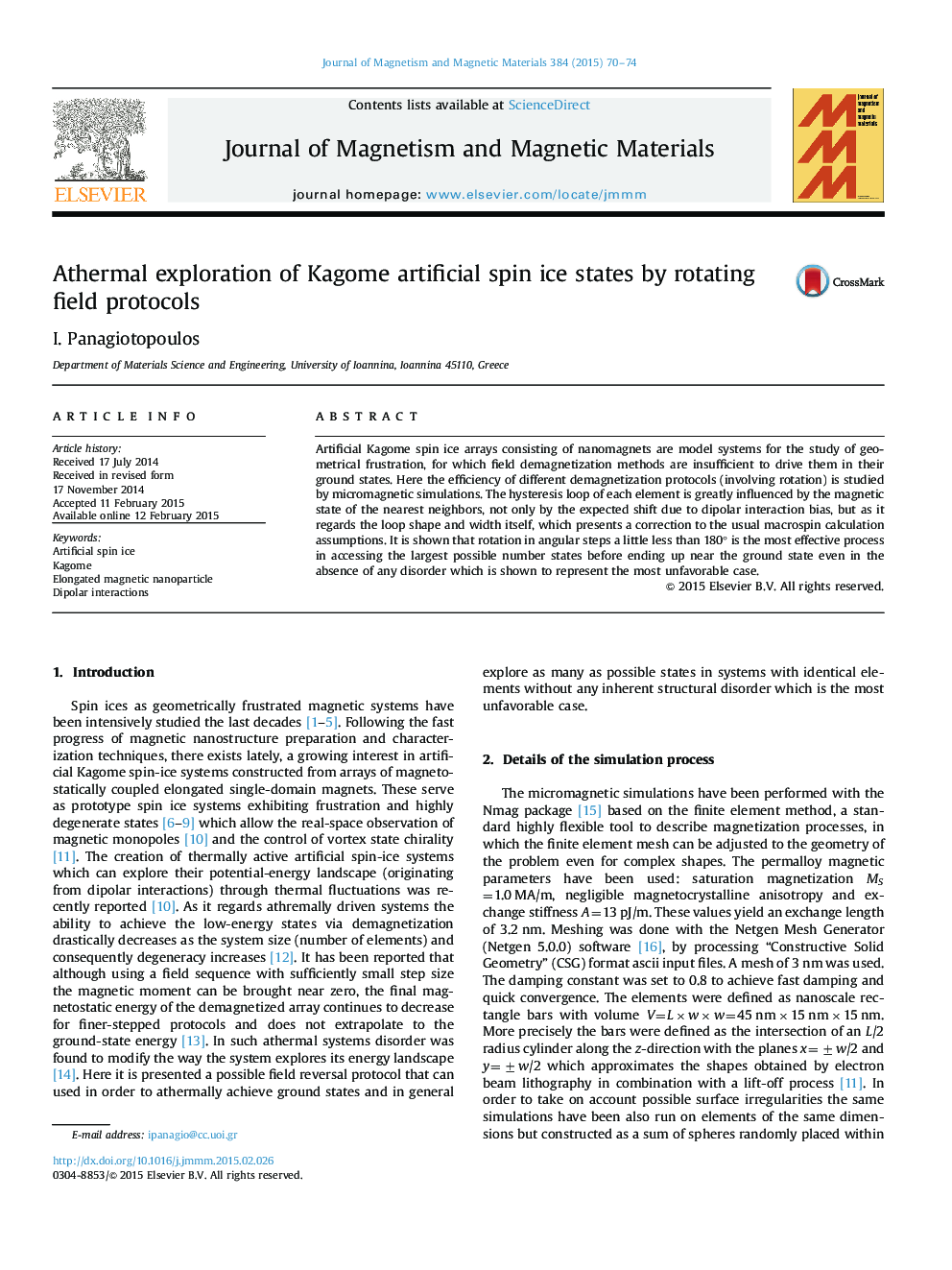| Article ID | Journal | Published Year | Pages | File Type |
|---|---|---|---|---|
| 1799065 | Journal of Magnetism and Magnetic Materials | 2015 | 5 Pages |
•Optimized athermal demagnetization process for a two-dimensional artificial kagome spin ice.•States with flux closure in small groups of elements difficult to obtain athermally in systems with N·30.•The dipolar interaction field not only biases but also changes the loop width.•Interactions lead to array size dependent remanence enhancement.
Artificial Kagome spin ice arrays consisting of nanomagnets are model systems for the study of geometrical frustration, for which field demagnetization methods are insufficient to drive them in their ground states. Here the efficiency of different demagnetization protocols (involving rotation) is studied by micromagnetic simulations. The hysteresis loop of each element is greatly influenced by the magnetic state of the nearest neighbors, not only by the expected shift due to dipolar interaction bias, but as it regards the loop shape and width itself, which presents a correction to the usual macrospin calculation assumptions. It is shown that rotation in angular steps a little less than 180° is the most effective process in accessing the largest possible number states before ending up near the ground state even in the absence of any disorder which is shown to represent the most unfavorable case.
